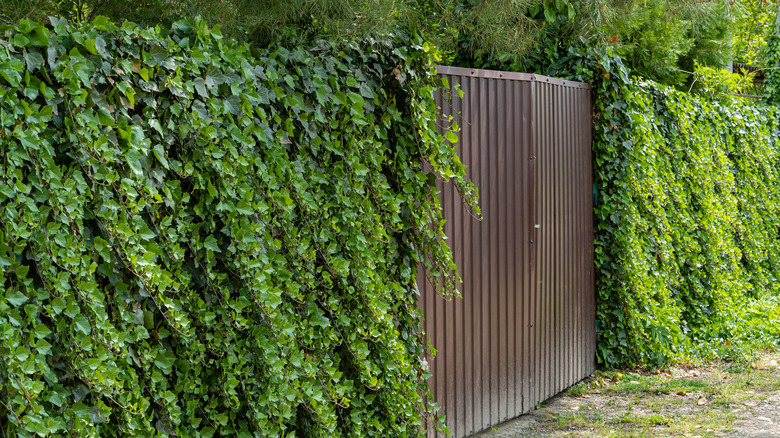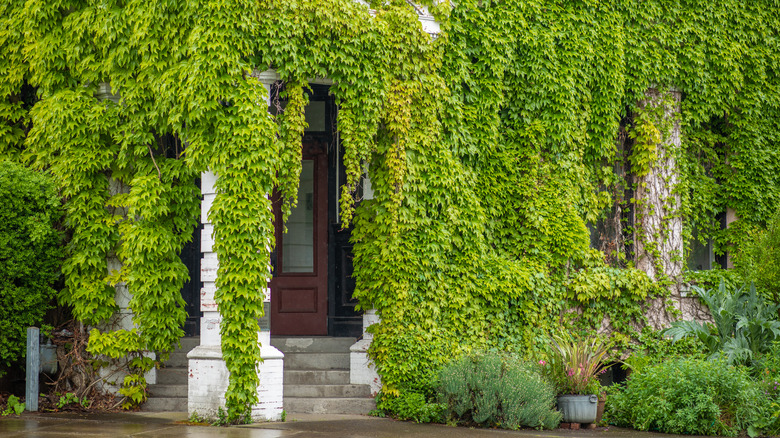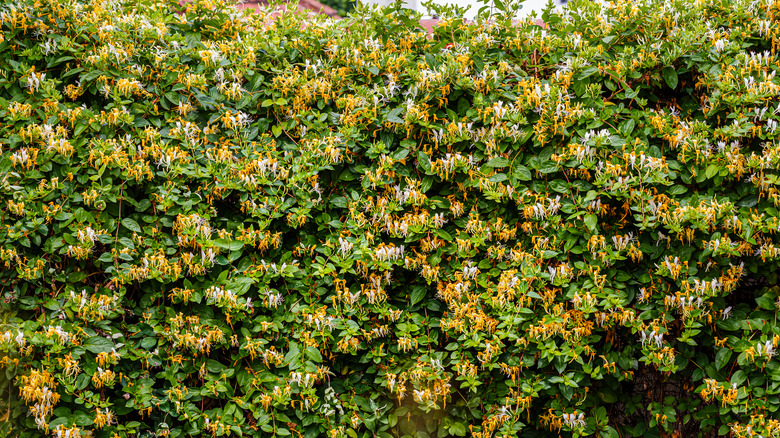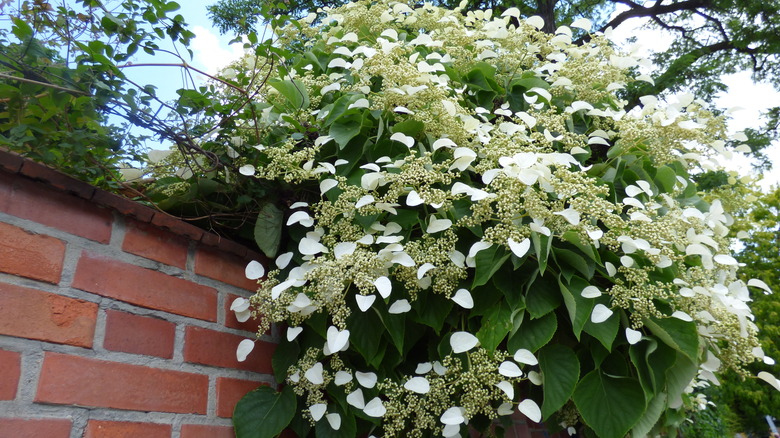Two Popular Plants You Should Actually Avoid Planting In Your Garden
As you plan your garden, it is easy to go to the plant nursery and pick out whatever looks best. Two common plants you may find there are English ivy (Hedera helix L.) and Japanese honeysuckle (Lonicera japonica). Landscapers like these popular vines because they grow quickly, even in shady areas. As such, ivy quickly covers unsightly fences and can offer privacy when grown on a trellis. Japanese honeysuckle produces aromatic blooms from late spring until autumn. While those features are appealing, there are important drawbacks to planting these invasive species in your garden.
To be considered an invasive species, a plant must fit two definitions, according to the U.S. Forest Service. First, they must be non-native to the ecosystem in which they are growing. Second, their inclusion in that ecosystem has caused or has the potential to cause harm to the environment or humans. While there are many invasive species of plants, Japanese honeysuckle and English ivy are two of the most popular additions to home landscaping.
About English Ivy
True to its name, English ivy is native to Europe (via Invasive.org), but early imports also came from Western Asia and Northern Africa. This vine can be found throughout the United States in home gardens and wild areas like fields and forests. It can grow in full shade to full sun, although it does not tolerate drought conditions. Because it is such an aggressive grower, it can quickly take over a native habitat on which beneficial insects and birds rely, leaving them without their much-needed food sources.
While growing English ivy in your landscape may seem harmless, the effect is far-reaching. Even if you manage to keep the vines confined to your yard, the plant produces seeds in the fall, which are eaten and dispersed by birds. Those seeds germinate, starting a new plant that will take over that ecosystem. Additionally, although many like the look of ivy growing up the side of a home, Trib Live states that as the plant spreads, its roots may cling to tiny seams or cracks in stucco siding. As the roots grow, the cracks get more prominent, so it's easy to damage a home's exterior when attempting to remove the vines.
About Japanese Honeysuckle
It's challenging to argue strongly against the sweet smell of honeysuckle unless you are a bee. While you may occasionally see a bee or butterfly on Japanese honeysuckle, it is far from their first choice, states WildYards. The amount of nectar in these blooms is minimal compared to native options, and because the flowers are so narrow, it is difficult to reach. Thus, by planting Japanese honeysuckle, you are missing an opportunity to provide nutrients to the nation's dwindling bee populations.
Once you plant Japanese honeysuckle in your yard, it is almost impossible to remove. Unlike its native relatives, this cultivar is a vine that uses tendrils and aerial roots to climb trees, bushes, fences – pretty much anything. As the vines grow along the ground, they establish deep roots, which grow more plants, and the cycle continues. The University of Maryland Extension states that each Japanese honeysuckle vine can grow around 30 feet long per year. Once it grows out of control, it is almost impossible to manage, and when it takes over your yard, that sweet smell becomes tainted. Like English Ivy, this plant is also spread by birds eating seeds and distributing them in wild areas.
Native alternatives
Although you may have had your heart set on adding one or both of these invasive plants to your garden, don't worry. Plenty of excellent alternatives are just as beautiful and benefit the ecosystem. For example, suppose you are looking for a vining plant for fences or arbors. In that case, the Loudoun County Master Gardeners suggest climbing hydrangeas (Hydrangea petiolaris), passion flowers (Passiflora), or trumpet creepers (Campsis radicans). All these plants provide blooms and seeds that provide nutrients to birds, bees, butterflies, and other beneficial insects. While passion flowers and trumpet creeper are aggressive growers, regular pruning and maintenance can keep them in place. Most importantly, if a bird spreads these seeds into the wild, it will benefit, rather than devastating, that ecosystem.
If you are looking for an alternative to English ivy for a ground cover, blue phlox (Phlox divaricata) and Carolina jessamine (Gelsemium sempervirens) are native plants that offer beautiful blooms and can tolerate some shade. Also, as you consider adding new plants to your landscape, look for native options. So many stunning plants are available that not only make your garden beautiful but also help provide a haven supporting beneficial insects and birds.



